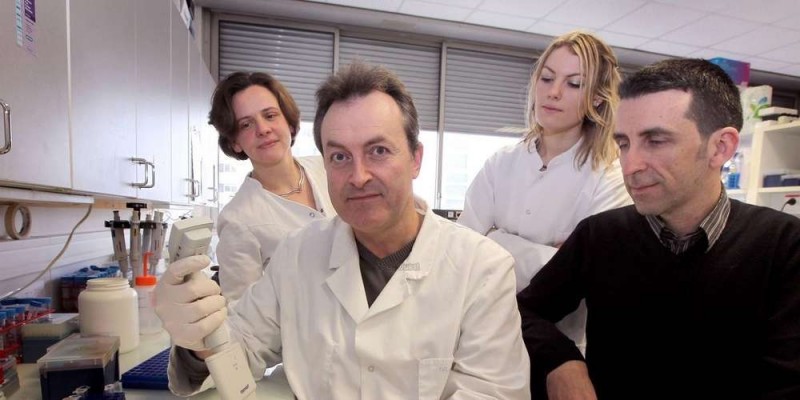Charity dedicated to the fight
against childhood cancer
against childhood cancer

Dr Christophe Grosset, your team has just filed a European patent relating to liver and brainstem cancer. Can you tell us more?
"This European patent protects the use of a combination of two types of drugs in the treatment of hepatoblastoma and DIPG but potentially also in other cancers in adults and children. This combination includes an anticancer agent currently being tested in clinical trials in adults and a lipid synthesis inhibitor which is available on prescription from pharmacies. We have found that the combination of these two drugs very effectively kills tumor cells in the laboratory. We believe also that lipid synthesis allows tumor cells to survive the effects of this anticancer. The use of a lipid synthesis inhibitor blocks this resistance process and therefore greatly improves (3 to 4 times) the effectiveness of the drug. 'anticancer agent, which implies the use of lower doses and therefore lower toxicity of chemotherapy for young patients. "
Concretely, what are the next steps for this promising treatment?
"Following the patent filing and with the support of Aquitaine Science Transfert, we are currently looking for industrial partners to produce these two drugs in a form that can be used in very young children (syrup, powder that can be incorporated into food, taste, etc.) , but also to start new clinical trials in children.European investment funds and industrialists who finance projects related to rare diseases seem interested in the content of our patent.
On the scientific side, the results of this patent suggest that lipid synthesis is an essential element for the survival of tumor cells in the presence of certain anticancer drugs, which opens up very promising prospects in the fight against childhood cancer. We therefore wish to explore this hypothesis in more detail but we will need more means to verify it.
With a new doctoral student, we started researching new drug combinations combining an anticancer drug and a lipid synthesis inhibitor. Out of 330 anticancer drugs tested, we have already selected 20 compounds that are active on DIPG cells. We are going to combine these drugs two by two and associate them with the lipid synthesis inhibitors that we have patented in order to find the most effective combination. With additional financial means, we could consider combining the 2 or 3 most effective anticancer drugs with almost 400 different lipid synthesis inhibitors in order to find the best combinations to eliminate DIPG tumor cells.
From my point of view, improving the survival of children with cancer and in particular those with DIPG will require the use of several drugs with complementary action. Our team is strongly committed to this direction.
We would like to warmly thank Eva pour la vie [first association to have supported this research team on childhood cancer] and all the associations which place their trust in us. Without you, nothing would have been possible. Our success is also that of associations, volunteers and donors who engage in the fight against childhood cancer. "